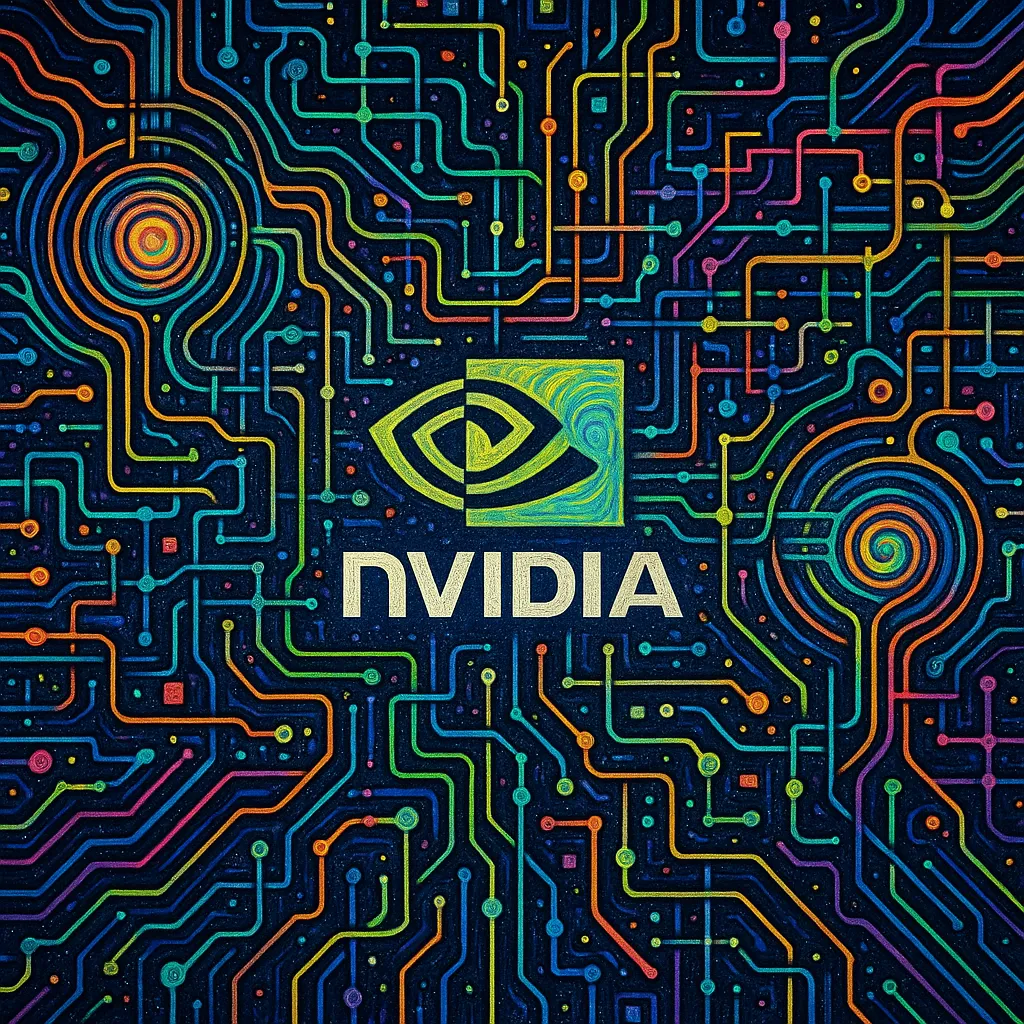NVIDIA’s Quiet Revolution: Why Networking Is Their Real AI Play
When most people think of NVIDIA, they picture GPUs — the chips behind ChatGPT, self-driving cars, and photorealistic gaming. But here’s the plot twist: NVIDIA’s biggest long-term advantage in AI might not be GPUs at all. It’s networking.
Behind every GPU headline lies an invisible story: the interconnects that make scaling possible. And NVIDIA, through strategic acquisitions and clever engineering, has quietly positioned itself as the company that owns not just the “brains” of AI, but also the “nervous system.”
From GPU Giant to Data Center Company
Jensen Huang has been clear in his messaging: NVIDIA is no longer just a chip company. It’s a full-stack data center company.
That vision hinges on one insight: AI performance at scale is limited more by networking than by raw GPU horsepower.
So NVIDIA has built — and bought — the plumbing.
Key Moves That Changed the Game
- Mellanox (2019 acquisition)
This was NVIDIA’s masterstroke. Mellanox was already the backbone of high-performance computing (HPC) with InfiniBand switches and NICs. By acquiring them, NVIDIA gained dominance over the world’s fastest AI supercomputers.- InfiniBand = ultra-low latency, high throughput, and lossless networking.
- Still the gold standard for AI training clusters.
- GPUDirect RDMA
Instead of routing GPU-to-GPU data through CPUs, GPUDirect RDMA lets GPUs talk directly across the network. The result? Lower latency, less CPU overhead, and a big step toward treating GPUs as a global pool of memory. - NVLink & NVSwitch
Inside a single server, NVLink/NVSwitch provide extremely high-bandwidth GPU-to-GPU connections. Without them, a DGX would just be a box of GPUs fighting for bandwidth. With them, it behaves like a unified super-GPU. - BlueField DPUs
These aren’t just network cards — they’re miniature servers that offload networking, storage, and security tasks. In AI clusters, BlueFields help run the interconnect fabric itself, freeing CPUs and GPUs for actual model training. - Spectrum-X (2023 launch)
NVIDIA’s bet that Ethernet can be made “AI-ready.” Spectrum-X combines Spectrum-4 Ethernet switches with BlueField DPUs to create lossless Ethernet fabrics. Why? Because not every enterprise wants to invest in InfiniBand — but they still want AI scaling.
Why Networking Is Now the Differentiator
A modern GPU like the H100 has nearly 1 TB/s of memory bandwidth. But most networks in data centers deliver a fraction of that, and with far higher latency.
- InfiniBand provides sub-microsecond latency and 400–800 Gb/s links.
- Ethernet, traditionally slower, is being retooled with Spectrum-X to offer AI-friendly fabrics.
- NVLink within a server can push >900 GB/s between GPUs — orders of magnitude faster than PCIe.
The point: AI clusters don’t scale because of faster GPUs — they scale because the interconnect can keep them fed. That’s why NVIDIA has doubled down on networking.
Real-World Implications
- HPC dominance: Almost every AI supercomputer on the TOP500 list uses Mellanox InfiniBand. That’s not an accident — it’s NVIDIA’s networking DNA.
- DGX SuperPODs: NVIDIA’s reference AI data centers ship with InfiniBand baked in. Networking is part of the design, not an afterthought.
- Enterprise AI: Spectrum-X is a bet that enterprises will prefer Ethernet-based AI fabrics over moving to specialized InfiniBand clusters.
NVIDIA isn’t just selling GPUs — it’s selling a whole nervous system.
The Future NVIDIA Is Building
The future of NVIDIA’s dominance looks less like “faster GPUs” and more like:
- Converged compute + comms: BlueField DPUs running AI-optimized networking stacks.
- Global GPU memory: Seamless GPU-to-GPU communication across racks, behaving like one pool of compute.
- Ethernet AI Fabrics: Pushing Ethernet into the AI age, backed by the Ultra Ethernet Consortium.
- Full-stack lock-in: Buy NVIDIA GPUs, get NVIDIA networking, run NVIDIA CUDA software — an end-to-end ecosystem.
Conclusion — The Real Play
NVIDIA will always be known for GPUs. But in the AI era, their networking portfolio is the true moat.
InfiniBand, GPUDirect, NVLink, Spectrum-X — these are the hidden levers that make AI clusters scale. Without them, GPUs are stranded islands of compute. With them, they form global superintelligences.
The irony? The future of AI belongs to the company that realized GPUs alone aren’t enough.
And NVIDIA’s biggest power move wasn’t inventing the GPU. It was owning the plumbing.
